- Home
- D. H. Lawrence
Kangaroo Page 22
Kangaroo Read online
Page 22
Now in this revolution stunt, and his insistence on ‘male’ activity, Somers had upturned the root flow, and Harriet was a devil to him—quite rightly—for he knew that inside himself he was devilish. She tried to keep her kindness and happiness. But no, it was false when the inner connection was betrayed. So her silent rage accumulated, and it was no good playing mental tricks of suppression with it. As for him, he was forced to recognise the devil in his own belly. He just felt devilish. While Harriet went about trying to be fair and happy, he realised that it was awful for him to be there, as black inside as an ink bottle; however, he practised being nice. Theoretically he was grateful to her, and all that. But nothing conjured away that bellyful of black devilishness with which he was enceinte. He really felt like a woman who is with child by a corrosive fiend. In his lower man, just girning and demoniacal. No good pretending otherwise. No good playing tricks of being nice. Seven thousand devils!
When he saw a motor car parked in the waste lot next to Coo-ee, and saw two women in twelve-guinea black coats and skirts hobbling across the grass to the bungalow farther down, perhaps wanting to hire it: then the devil came and sat black and naked in his eyes. They hobbled along the uneven place so commonly, they looked so crassly common in spite of their tailors’ bills, so low, in spite of their motor car, that the devil in him fairly lashed its tail like a cat. And yet, he knew, they were probably just two nice, kindly women, as the world goes. And truly, even the devil in him did not want to do them any personal harm. If they had fallen, or got into difficulty, he would have gone out at once to help them all he could. And yet, at the sight of their backs in their tailored ‘costumes’ hobbling past the bushes, the devil in him lashed its tail till he writhed.
So there you are. Or rather, there was Richard Lovat Somers. He tried to square accounts with himself. Surely, he said to himself, I am not just merely a sort of human bomb, all black inside, waiting to explode I don’t know when or how or where. That’s what I seem like to myself, nowadays. Yet surely it is not the only truth about me. When I feel at peace with myself, and, as it were, so quietly at the centre of things—like last evening, for example—surely that is also me. Harriet seems fairly to detest me for having this nice feeling all to myself. Well, it wasn’t my fault if I had it. I did have it. What does she want? She won’t leave a fellow alone. I felt fairly beatific last evening—I felt I could swim Australia into a future, and that Jaz was wonderful, and I was a sort of central angel. So now I must admit I am flabbergasted at finding my devil coiled up exultant like a black cat in my belly this morning, purring all the more loudly because of my ‘goodness’ of last evening, and lashing his tail so venomously at the sight of the two women in the black ‘costumes’. Is this devil after all my god? Do I stand with the debbil-debbil worshippers, in spite of all my efforts and protestations?
This morning I do, and I admit it. I can’t help it: it is so, then let it be so. I shall change again, I know. I shall feel white again, and like a pearl, suave and quiet within the oyster of time. I shall feel again that, given but the answer, the black poisonous bud will burst into a lovely new, unknown flower in me. The bud is deadly poison: the flower will be the flower of the tree of life. If Harriet let me alone, and people like Jaz really believed in me! Because they have a right to believe in me when I am at my best. Or perhaps he believes in me when I am my worst, and Kangaroo likes me when I am good. Yet I don’t really like Kangaroo. The devil in me fairly hates him. Him and everybody. Well, all right then, if I am finally a sort of human bomb, black inside, and primed; I hope the hour and the place will come for my going off: for my exploding with the maximum amount of havoc. Some men have to be bombs, to explode and make breaches in the walls that shut life in. Blind, havoc-working bombs too. Then so be it.
That morning as luck would have it Somers read an article by A. Meston in an old Sydney Daily Telegraph, headed:
EARTHQUAKES
Is Australia Safe?
SLEEPING VOLCANOES
The fact that Australia so far has had no trouble with volcanoes or earthquakes, and appears to be the most immune country in the world, accounts for our entire indifference to the whole subject. But here are phases of this problem entitled to some serious consideration by those in whom the thinking and observant faculties are not altogether dormant, and who have not a calm, cool disregard of very ominous inexorable facts. Australia is a very peaceful reposeful area, with the serious volcanoes of New Zealand on one side, and the still more serious volcanoes of Java on the other. We live in a soft flowery meadow between two jungles, a lion in one and a tiger in the other, but as neither animal has chased or bitten us, up to the present time, we go calmly to sleep quite satisfied they are harmless.
Now the line of volcanic action on the east coast of Australia is very clearly defined, from the basalt of Illawarra, north to the basalt within three miles of Cape York. The chief areas over all that distance are the Big Scrup on the Richmond River, the Darling Downs, and the Atherton Tableland, behind Cairns.
These are the largest basalt areas in Australia, the Darling Downs and Atherton containing each about two million acres of basalt, the one chiefly black, and the other all red. The other conspicuous areas are the red basalt Isis and Woongarra scrubs, and north of Atherton the next basalt area is on the M’Ivor and Morgan Rivers, forty miles north of Cooktown. From there I saw no basalt on the coast of the Peninsula, until somewhat surprised to find great piles of black basaltic stone, like artificial quarry heaps, in the dense Seaforthia palm scrubs ten miles west of Somerset.
VOLCANIC EVIDENCE
Here, then, is a clearly defined but very intermittent line of volcanic action along our entire east coast for over two thousand miles. Yet today there is not only not one active volcano on the whole of that area, but not even one clearly authentic dead one. There is nothing to show whence came the basalt of the Darling Downs, the Big Scrup, or the Atherton Tableland, unless in the last case the two deep freshwater lakes, Barrine and Eacham, the Barrang and Zeetcham of the Aboriginals, represent the craters of extinct volcanoes.
Whence, then, came the basalt spread along a narrow line of our east coast for two thousand miles, and all of it east of the Dividing Range? There is a lot of room for theories…
When the late Captain Audley Coote was laying the cable from New Caledonia to Sandy Cape, at the north end of Fraser Island, on the South Queensland coast, he passed a submerged mountain 6000 feet in height, and found a tremendous chasm, so deep that they could find no bottom, and had to work the cable round the edge. When he reached the coast of Fraser Island he got the same soundings as Cook and Flinders and the Admiralty survey in the ’sixties, six to eight fathoms, but there came a break in the cable in after years, located in that six and eight fathom area, and they found the broken cable hanging over a submarine precipice of eight hundred feet.
That I read in Captain Coote’s own manuscript journal, and it was confirmed by Captain John Mackay, the Brisbane harbourmaster, who assured me that an 800-foot chasm had suddenly formed there in the bottom of the ocean!
On the coast of Japan, the ocean bottoms sank in one place suddenly from four or five fathoms to 4000 feet.
The old Fraser Island Aboriginals told me that the deep blue lake, two miles from the White Cliffs, was once a level plateau, on which their fathers held fights and corroborees, and that it sank in one night. On the North Queensland coast, there is fairly shallow water from the seashore out to the edge of the Barrier, and then the ocean goes down to depths up to two and three thousand feet, so if the sea were removed you would look down from the outer Barrier into a tremendous valley with a wall of granite cliffs.
When the town of Port Royal in Jamaica was destroyed by an earthquake on June 7, 1692, the houses all disappeared into an ocean chasm 300 feet in depth; and in the terrible earthquake at Lisbon, 1755, destroying 2000 houses and 5000 people, the wharves and piers, and even the vessels lying beside them, disappeared into some tremendous gulf, leaving
no trace whatever.
It is a singular fact that the heights of the loftiest mountains correspond with the depths of the deepest seas, and that the 29,000 feet of Mount Everest is equal with what is known as the ‘Tuscarora Deep’, fathomed by the USA vessel Tuscarora.
ISLANDS THAT VANISHED
From the days of Seneca there are records of islands suddenly appearing before astonished mariners, and others disappearing suddenly before mariners equally astonished. In the dreadful volcanic explosion of Krakatoa in August, 1883, one mountain peak was blown to pieces, while others were thrown up from the ocean. The tidal wave created by Krakatoa destroyed 40 000 people, and the air wave from the concussion pulsated three times round the world. And Krakatoa and the Javanese volcanoes are only a short distance from the coast of Australia!
Doubtless many of the ships that have mysteriously disappeared, leaving no trace, have gone down in the vortex of a submarine earthquake, or a chasm created by a sudden shrinkage in the bottom of the ocean. From the facts above available it is reasonable to believe that the present continent of Australia is only a portion of the original, and that in some remote period it extended hundreds or thousands of miles to the eastward, probably including Lord Howe and Norfolk Islands and New Zealand, possibly New Caledonia. How came the ancient Cretaceous Ocean, which once covered all Central Australia, from the gulf to the Bight, to withdraw from the land, leaving nothing but marine fossils in the desert sandstone?
Was the Cretaceous Ocean shallow all round this continent, and did it suddenly subside to fill some tremendous chasm caused by a sudden submarine shrinkage of the earth’s crust, followed by the inland sea, which naturally rushed out into the vacancy?
What seems the only real danger to Australia lies not in the eruptions of some suddenly created new volcano, or any ordinary earthquake, but in just such shrinkages in the sea bottom as occurred on the coast of Japan, off Fraser Island, and many other localities, including Lisbon and Port Royal.
If such a subsidence were to come under Sydney, Melbourne, Adelaide or Brisbane, it might be of such a magnitude that the whole city would disappear into the gulf.
We know nothing whatever of the awful forces at work beneath the crust of the earth, and nothing of the internal fires, or that awful subterranean abode where Shelley said ‘the old earthquake Demon nurses her young Ruin’. The history of volcanoes and earthquakes is an appalling record of lost countless millions of lives and awful destruction.
One Peking earthquake destroyed 300,000 people, one in Naples 70,000, another at Naples 40,000; and we are not far from July, 1902, when the volcano of Mount Pelée, in the island of Martinique, wiped out the town of St Pierre and 30,000 inhabitants.
Still nearer is that 18th April, 1906, when the San Francisco earthquake killed over a thousand people, and did damage to the extent of sixty millions.
And so far in Australian history we have not had an earthquake that would capsize a tumbler of hot punch.
Why hot punch, thought Somers, why not hot bitters or ice-cream soda, which are much more Austral and to the point? But he had read this almost thrilling bit of journalism with satisfaction. If the mother earth herself is so unstable, and upsets the applecart without caring a straw, why, what can a man say to himself if he does happen to have a devil in his belly!
And he looked at the ocean uneasily moving, and wondered when next it would thrust an angry shoulder out of the watery bedcovering, to give things a little jog. Or when his own devil would get a leg up into affairs.
CHAPTER IX
HARRIET AND LOVAT
AT SEA IN MARRIAGE
WHEN a sincere man marries a wife, he has one or two courses open to him, which he can pursue with that wife. He can propose to himself to be (a) the lord and master who is honoured and obeyed, (b) the perfect lover, (c) the true friend and companion. Of these (a) is now rather out of date. The lord and master has been proved, by most women quite satisfactorily, to be no more than a grownup child, and his arrogance is to be tolerated just as a little boy’s arrogance is tolerated, because it is rather amusing, and up to a certain point becoming. The case of (b), the perfect lover, is the crux of all ideal marriage today. But alas, not even the lord and master turns out such a fiasco as does the perfect lover, ninety-nine times out of a hundred. The perfect-lover marriage ends usually in a quite ghastly anticlimax, divorce and horrors and the basest vituperation. Alas for the fact, as compared with the ideal. A marriage of the perfect-lover type is bound either to end in catastrophe, or to slide away towards (a) or (c). It must either revert to a mild form of the lord-and-master marriage, and a wise woman, who knows the sickeningness of catastrophes and the ridiculous futility of second shots at the perfect-love paradise, often wisely pushes the marriage back gradually into one of the little bays or creeks of this Pacific ocean of marriage, lord-and-masterdom. Not that either party really believes in the lordship of man. But you’ve got to get into still water some time or other. The perfect-love business inevitably turns out to be a wildly stormy strait, like the Straits of Magellan, where two fierce and opposing currents meet and there is the devil of a business trying to keep the barque of marriage, with the flag of perfect-love at the mast, from dashing on a rock or foundering in the heavy seas. Two fierce and opposing currents meet in the narrows of perfect love. They may meet in blue and perfect weather, when the albatross hovers in the great sky like a permanent benediction, and the sea shimmers a second heaven. But you needn’t wait long. The seas will soon begin to rise, the ship to roll. And the waters of perfect love—when once this love is consummated in marriage—become inevitably a perfect hell of storms and furies.
Then, as I say, the hymeneal barque either founders, or dashes on a rock, or more wisely gets out of the clash of meeting oceans and takes one tide or the other, where the flood has things all its own way. The woman being today the captain of the marriage barque, either steers into the vast Pacific waters of lord-and-masterdom, though never, of course, hauling down the flag of perfect love; or else, much more frequently these latter days, she steers into the rather grey Atlantic of true friendship and companionship, still keeping the flag of perfect love bravely afloat.
And now the barque is fairly safe. In the great Pacific, the woman can take the ease and warm repose of her new dependence, but she is usually laughing up her sleeve. She lets the lord and master manage the ship, but woe betide him if he seeks to haul down the flag of perfect love. There is mutiny in a moment. And his chief officers and his crew, namely his children and his household servants, are up and ready to put him in irons at once, at a word from that wondrous goddess of the barque, the wife of his bosom. It is Aphrodite, mistress of the seas, in her grand capacity of motherhood and attendant wifehood. None the less, with a bit of managing the hymeneal barque sails on across the great waters into port. A lord and master is not much more than an upper servant while the flag of perfect love is flying and the sea-mother is on board. But a servant with the name of captain, and the pleasant job of sailing the ship and giving the necessary orders. He feels it is quite all right. He is supreme servant-in-command, while the mistress of mistresses smiles as she suckles his children. She is suckling him too.
Nevertheless, this is the course I would recommend young married women to drift into, after the first two years of ‘perfect love’.
They won’t often take my advice, I know that. Ha-ha! they will say. We see through your lord-and-master tricks. Course East-North-East, helmsman, into the safer and more populous waters of perfect companionship. If we can’t have one thing perfect we’ll have another. If it isn’t exactly perfect love, it is perfect companionship, and the two are pretty nearly one and the same.
For woman, even more than man, when once she gets an idea into her head, or worse, when once she gets herself into her head, will have nothing short of perfection. She simply will tolerate nothing short of perfection. ENE then, into the democratic Atlantic of perfect companionship.
Well, they are grey waters,
and the perfect companionship usually resolves, subtly, and always under the perfect love flag, into a very nearly perfect limited liability company, the barque steering nicely according to profit and loss, and usually ‘getting on’ fabulously. The Golden Vanity. If this perfect love flag is a vanity, the perfect-companionship management is certainly Golden. I would recommend perfect-companionship to all those married couples who truly and sincerely want to get on.
Now the good barque Harriet and Lovat had risen from the waves, like Aphrodite’s shell as well as Aphrodite, in the extremest waters of perfect love. Love and love alone! Wide, wild, lonely waters, with the great albatross like a sign of the cross, sloping in the immense heavens. A sea to themselves, the waters of perfect love. And the good ship Harriet and Lovat, with white sails spread, sailing with never a master, like the boat of Dionysus, which steered of its own accord across the waters, in the right direction mark you, to the sound of the music of the dolphins, while the master of the ship put forth tendrils of vine and purple bunches of grapes, and the grapes of themselves dripped vinous down the throats of the true Dionysians. So sailed the fair ship Harriet and Lovat in the waters of perfect love.
I have not made up my mind whether she was a ship, or a barque, or a schooner, technically speaking. Let us imagine her as any one of them. Or perhaps she was a clipper, or a frigate, or a brig. All I insist is that she was not a steamboat with a funnel, as most vessels are nowadays, sailing because they are stoked.

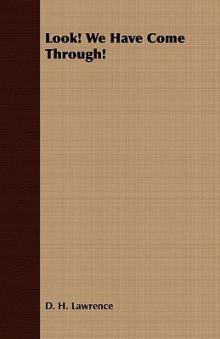 Look! We Have Come Through!
Look! We Have Come Through! Women in Love
Women in Love The Ladybird
The Ladybird The Rainbow
The Rainbow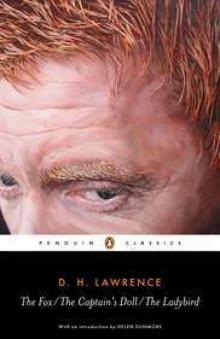 The Captain's Dol
The Captain's Dol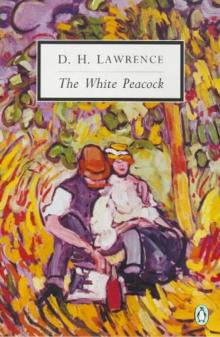 The White Peacock
The White Peacock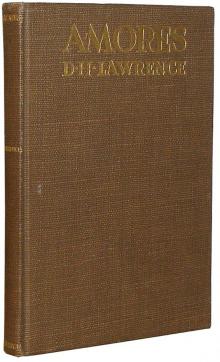 Amores
Amores Lady Chatterley's Lover
Lady Chatterley's Lover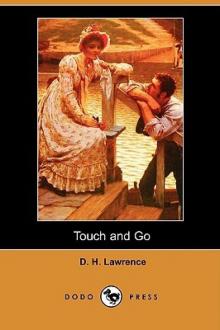 Touch and Go
Touch and Go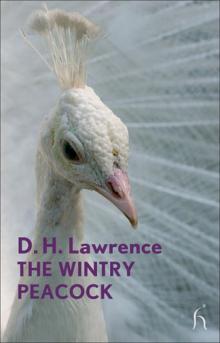 The Wintry Peacock
The Wintry Peacock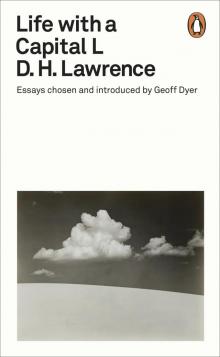 Life with a Capital L
Life with a Capital L The Lost Girl
The Lost Girl Sons and Lovers
Sons and Lovers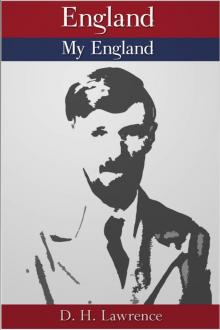 England, My England
England, My England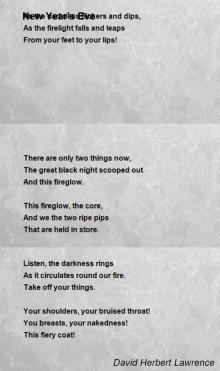 New Poems
New Poems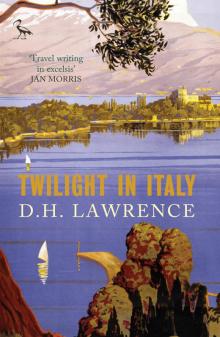 Twilight in Italy
Twilight in Italy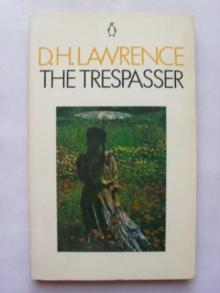 The Trespasser
The Trespasser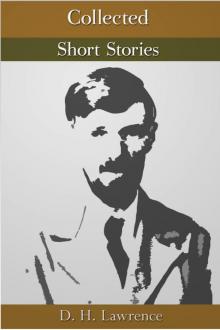 The Collected Short Stories
The Collected Short Stories The First Lady Chatterley's Lover
The First Lady Chatterley's Lover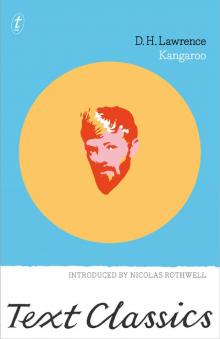 Kangaroo
Kangaroo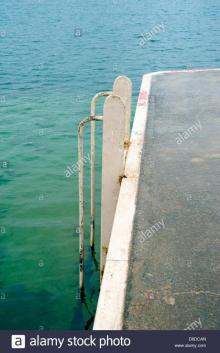 Bay
Bay Complete Works of D.H. Lawrence
Complete Works of D.H. Lawrence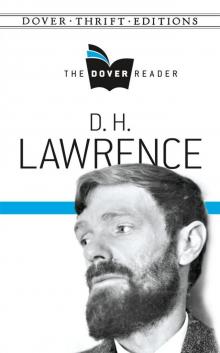 D H Lawrence- The Dover Reader
D H Lawrence- The Dover Reader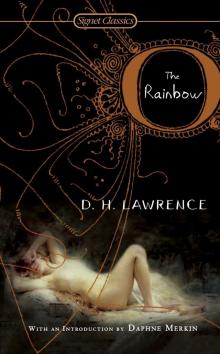 The Rainbow (100th Anniversary ed.)
The Rainbow (100th Anniversary ed.)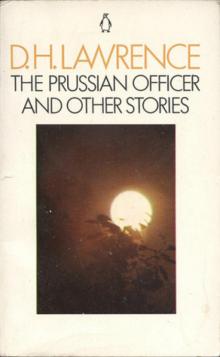 The Prussian Officer
The Prussian Officer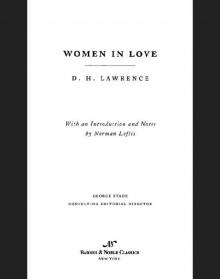 Women in Love (Barnes & Noble Classics Series)
Women in Love (Barnes & Noble Classics Series) John Thomas and Lady Jane
John Thomas and Lady Jane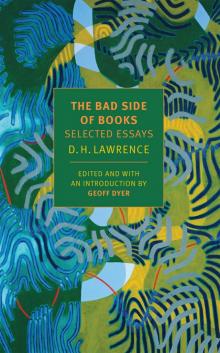 The Bad Side of Books
The Bad Side of Books Sons and Lovers (Barnes & Noble Classics Series)
Sons and Lovers (Barnes & Noble Classics Series) Selected Stories
Selected Stories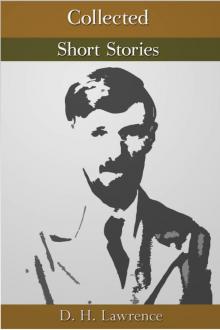 Collected Short Stories
Collected Short Stories Complete Works of D.H. Lawrence (Illustrated)
Complete Works of D.H. Lawrence (Illustrated)